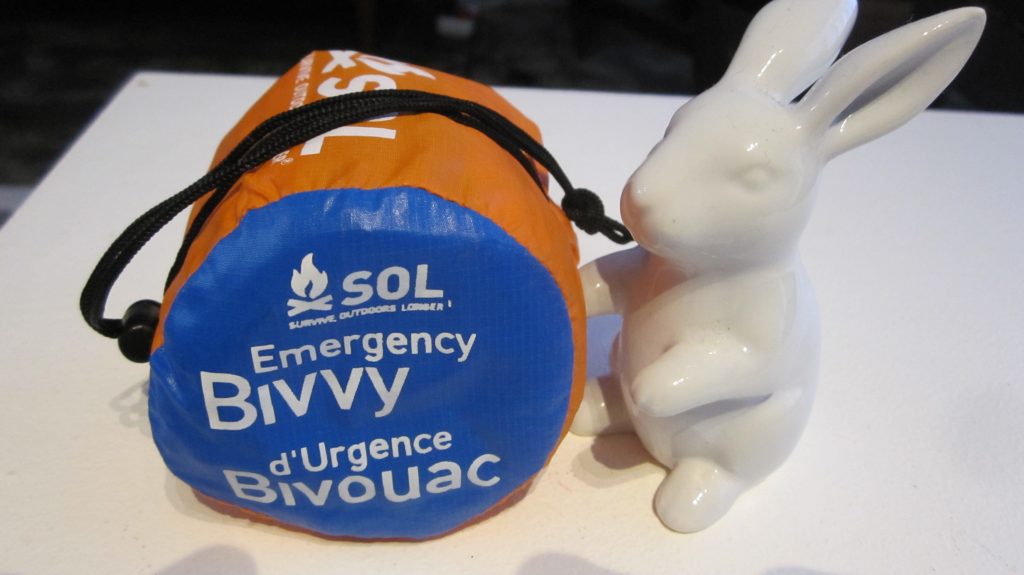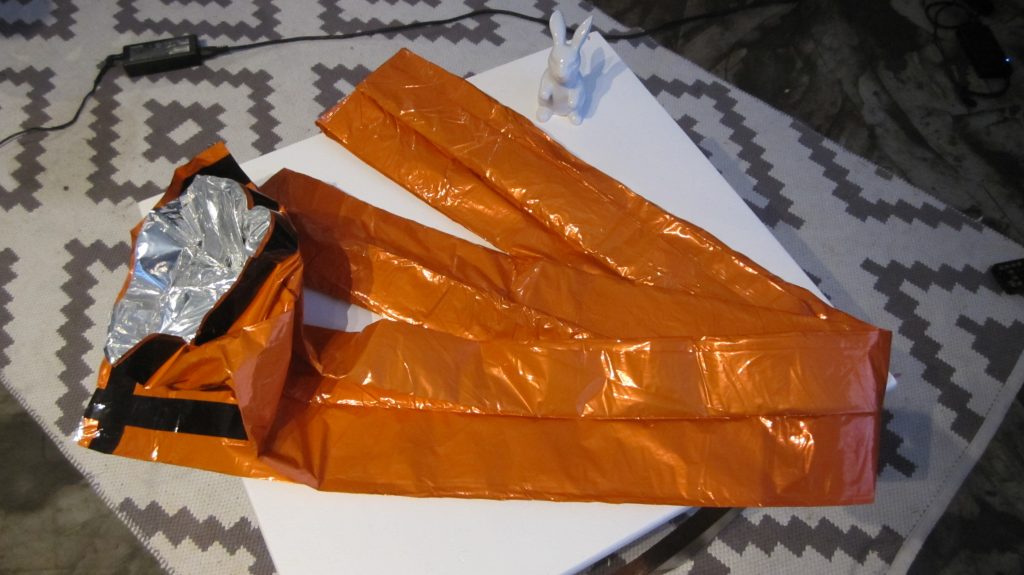The Emergency Bivvy Bag
This little bag is a must-have for any hiking trip, especially when hiking in cold and remote conditions.
It is Wednesday 07 June 2017 and Cape Town is in the grips of the most severe weather event in the last 40 years, according to the South African Weather Service. The City was expecting 50 mm of rain to be dumped on the metropolis within 24 hours causing flash flooding. The weather gurus are also forecasting icy winter conditions with snow predicted to fall on local mountain ranges.
This got me thinking about what I would need to survive if caught up in a severe weather event like this, without warning, whilst out on a mountain hike. There are various types products on the market, but one in particular caught my eye. Now many of you may know of it, but as a recent addition to the hiking fraternity, I came across it for the first time during June 2017. It is called an emergency bivvy. The word bivvy is a derivative of the French word ‘bivouac’.
Wikipedia describes a bivouac shelter like this:
“A bivouac shelter is any of a variety of improvised camp site or shelter that is *usually of a temporary nature, used especially by soldiers, persons engaged in scouting and mountain climbing. A bivouac shelter is colloquially known as a bivy, bivvy, or bivi.”
The Merriam-Webster online dictionary defines a ‘bivvy bag’ as:
“a collapsible bag made of weatherproof fabric that is used to provide shelter usually for a single person in the wilderness.”
This very informative article that discusses the basics of bivvy bags and bivvy shelters, if you are interested into going into much more detail.
The reasoning behind posting an article on an emergency bivvy was to highlight the importance of having an emergency plan to shelter yourself when you get caught in rapidly deteriorating weather, or in a situation where you are on a day hike on Table Mountain and one of your party is injured and cannot walk. If this occurs in the late afternoon, you may be forced to find shelter on the mountain, after dark, when you did not dress, plan or pack for it. That being said, overnighting on Table Mountain is dangerous and should not be considered unless you have no other way to get off the mountain without endangering yourself or the rest of your group. Even though you are able to contact a rescue service to come and get you, it may take some time for them to find you, especially if you are lost and cannot give them your precise location. Exposure to the cold conditions and chilling mountain winds can be as dangerous as a fall from a height. Just because Table Mountain is not covered in snow, doesn’t mean that you will not die of hypothermia on its green slopes.
The advantages of a bivvy bag are that it is small and lightweight. When unfolded, it has the dimensions of a sleeping bag without the added bulk and the weight. It will allow you to squeeze yourself under a rock overhang or into the base of a large rock and out of the path of the prevailing weather. You cannot do that with a tent. A bivvy also does not need poles or guide ropes that need to have enough space and suitable surfaces to be secured to. A bivvy is waterproof and windproof and folds into a 7 x 7cm bag and weighs next to nothing. The bivvy itself, when unfolded, is 2.12 m in length and it is open at one end.
The product that I came across is made by a company called Adventure Medical Kits who have a range of branded products called Survive Outdoors Longer (SOL). This particular product is called the Emergency Bivvy. Crucially these bivvys will help to keep you dry during a sudden rain storm and warm when experiencing bitterly cold conditions on the mountain. Here is a decent review of this product online if you are interested in reading it.
What’s really cool about this type of emergency shelter is that it can lie on the bottom of your day pack without taking up very much space. You don’t need to take it out. It can just stay in your bag until you need to use it. It is made of a polyethylene material which has a similar function to that of a space blanket which is to reflect the body’s heat back at it. The bivvy itself is bright orange which will make you more easily visible to searchers from the air and on the ground.
I took the bivvy out of it’s carry bag and rolled it out to have look at it. On looking closely at the polyethylene material, it looked very similar to space blanket material, however the information leaflet that comes with the bivvy says the following:
“The Heatsheets material used in your emergency bivvy represents a more durable, quieter reflective material than the traditional mylar polyester, space blanket products. Most importantly, the Heatsheets polyethylene material is not subject to catastrophic rips that would render a mylar, polyester blanket or bivvy useless, exposing you to the elements and potentially more. The Heatsheets material is stretchable, pliable material that gives instead of rips. If you do puncture a hole in your bivvy, a piece of duct tape works well as a patch.”
Some of the climbers and hikers that have used this product have remarked that it does generate condensation on the inside of the bag, when fully sealed. Just bear this in mind and if you are able to keep the bag slightly open or open it regularly and it should mitigate the risk of this happening.
For the size and weight, a bivvy should be a stock standard item to be included in any day pack or backpack of someone hiking on Table Mountain. It is only really for one person so as many people in your hiking party should carry one. It is reusable.You can, however, invest in the two person emergency bivvy.
I purchased my SOL Emergency Bivvy from Venture Forth International located in Montague Gardens, Cape Town. I can’t find the receipt so I can’t remember exactly how much it cost, but I think it was between R200 – R300. Venture Forth International is also a guide school and offers adventure training.


